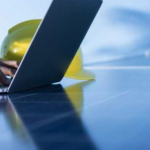LG’s 100-Inch QNED evo AI TV Redefines Big-Screen Viewing in South Africa In a bold leap forward for home entertainment, LG Electronics South Africa…
Paint that cools down buildings is here, here’s what we know

Paint that cools down buildinggs and apparently saves lives is here, the science proven and is now at a large scale rollout transforming military bases in on of the hottest provinces of South Africa, Limpopo.
This large single cool surface project is being rolled out on military bases across the Limpopo Province.
The recent data shows how the innovative idea works by making personnel’s working environments more thermally comfortable.
More data is expected to be gathered to advise policy in the country.
The first phase of the project involves 470 800 m2 with the second involving 900 000 m2.
Together we can expect an area over 1.37 million m2 to be covered in cool surface paint by the end of 2025.
Walls and roofs have been painted turning housing schools, creches, clinics and military structures into comfortable working and living spaces while cutting down dramatically on air conditioning use.
Dr Karen Surridge who leads the project on behalf of the South African National Energy Development Institute (SANEDI) noted how their offices were now a bit chilly in winter.
The low tech solution involves more than a paintbrush and scaffolding.
The old paint has to be stripped completely with the surface primed before the painting can begin.
The cool surface paint has to be applied to a certain thickness, while the paint contains a compound similar to what is found in sunblock and works in much the same way that it reflects heat and light away from the building.
Application is crucial and it’s highly imperative that rollout includes training and upskilling artisans in the military to be skilled in implementing the project should it be nationally expanded.
The project currently created around 50 jobs, with other emerging in the form of roofing inspection, site preparation, use of scaffolding, minor repairs to roofs and spray guns and health and safety procedures and quality assurance.
We understand that the project implemented on military bases forms part of an initiative that has been mandated by the Department of Mineral resources and Energy in support of the larger historic One Million Cool Roofs Challenge, a passive energy efficiency technology that government is driving towards and energy secure future.
Scientist Surridge is interested in the scale of the initiative which will enable SANEDI to study the so called cool bubble effect for the first time in the country.
“The large bases we are painting are like towns themselves, making them ideal to measure the cool-bubble effect under local conditions,” says Surridge.
“The project with our military partners is not even halfway yet and already we are seeing great results,” says Surridge.
“The data shows a marked difference between coated and uncoated buildings, and the energy savings are considerable. As always, our Department of Defence partners are fully committed to proving technology effectiveness for the citizens of South Africa.”

